Sayer Ji
Oct 05, 2025
Read, share and comment on the X post dedicated to this report: https://x.com/sayerjigmi/status/1974847658498891809
Story at a glance
Hormone Regeneration Discovery: A landmark 1993 study revealed that vitamin C can regenerate damaged steroid hormones (progesterone, testosterone, estrogen) through electron donation, restoring 53-91% of UV-damaged hormone molecules and potentially reducing carcinogenic metabolite formation.
Natural Alternative to HRT: Vitamin C may serve as a safer complement or alternative to conventional hormone replacement therapy by preserving and repairing the body’s own hormones rather than introducing external hormones, with an exceptional safety profile even at high doses.
Anti-Aging Skin Benefits: Beyond hormones, vitamin C drives collagen synthesis, accelerates wound healing, evens skin tone by inhibiting melanin production, and provides antioxidant protection against UV damage—making it essential for maintaining youthful, resilient skin.
Molecular Mechanism: As a potent electron donor, vitamin C repairs oxidized hormone molecules by replacing lost electrons, preventing their breakdown into potentially harmful metabolites and supporting natural hormone balance throughout aging.
Vitamin C’s Forgotten Breakthrough: Regenerating Hormones and Revitalizing Health
Vitamin C has long been hailed for preventing scurvy and bolstering immunity, but emerging and long-overlooked research suggests this humble nutrient may hold far more profound benefits. In the early 1990s, a groundbreaking study revealed something revolutionary: vitamin C can literally regenerate “broken” steroid hormones—restoring molecules like progesterone, testosterone, and estrogen that had been damaged by environmental stress.¹ This discovery, published in Radiation Physics and Chemistry in 1993, was one of the first to show that short-lived hormone intermediates (so-called hormone transients) could be structurally repaired through the simple act of electron donation.¹
Fast forward to today, and science is finally catching up to the implications of this finding. Vitamin C’s ability to donate electrons underpins not only its role in hormone preservation, but also a suite of anti-aging effects—from stimulating collagen for youthful skin to speeding wound healing and even protecting skin from UV damage. In this article, we will delve into that remarkable 1993 study and what it means for natural hormone balance and cancer prevention, explore how vitamin C acts as an electron donor to repair molecules, and highlight vitamin C’s other age-defying properties. We’ll see why vitamin C might just be a safer alternative or complement to hormone replacement therapy, and why its safety profile and therapeutic versatility make it a star player in natural medicine.
The 1993 Discovery: Vitamin C as a Hormone “Regenerator”
In 1993, a team of researchers led by Dr. Nikola Getoff at the University of Vienna published a pioneering study with a title as intriguing as its findings: ”Photo-induced regeneration of hormones by electron transfer processes: Potential biological and medical consequences.”¹ This study—largely overlooked for decades—asked a bold question: if steroid hormones are damaged (for example, by radiation or other stressors that knock electrons off their molecular structure), could they be brought back to life by a generous electron donor? In simpler terms, can a nutrient like vitamin C donate electrons to fix a hormone that’s been broken? The answer, astonishingly, was yes.
The researchers focused on three major steroid hormones as test cases: progesterone (PRG), testosterone (TES), and estrone (E1) (a form of estrogen). These hormones were chosen as representatives of their class, and the experiment simulated environmental stress by exposing hormone solutions to ultraviolet (UV) light. UV radiation (at 254 nm) causes the hormones to become excited and emit electrons, effectively damaging themselves and creating what the scientists called “hormone transients”. A hormone transient is essentially a short-lived, unstable version of the hormone—a molecular fragment or radical that has lost an electron and, with it, its normal function. Under usual circumstances, once a hormone molecule is broken like this, it might decompose or form other metabolites, some of which could be harmful.¹
Enter vitamin C (ascorbic acid)—well-known as a powerful electron donor or “reducing agent.” The research team mixed vitamin C into the hormone solutions and found that, as the hormones were being broken by UV light, vitamin C began sacrificing its own electrons to restore the hormone molecules. Incredibly, the study demonstrated for the first time that these hormone transients “can be successfully regenerated by the transfer of electrons from a potent electron donor, such as vitamin C (VitC)”.¹ Essentially, vitamin C acted like a molecular repairman, patching up the hormones’ structure by replacing lost electrons.
The results were nothing short of remarkable. Using sensitive analytical techniques (HPLC), the scientists measured how much of each hormone could be recovered when vitamin C was present. They reported that progesterone was regenerated by about 52.7%, testosterone by about 58.6%, and estrone by a stunning 90.9%. In other words, nearly half to almost all of the “destroyed” hormone molecules were chemically restored to their original form, with estrone—an estrogen—showing the highest level of revival. The presence of vitamin C dramatically rescued these hormones compared to them being left to degrade. Notably, the vitamin C itself was gradually used up in the process (as it donated electrons, it became oxidized), indicating that ascorbate was actively sacrificing itself to heal the hormones.¹
The authors concluded that this ability to regenerate hormones from their transient, damaged forms opens “a new, promising method for therapy with hormones.” They suggested that if we can apply this phenomenon, we might maintain hormone levels and functions without needing to constantly replace them, and “as a consequence of the regeneration of hormones, a decreased formation of carcinogenic metabolites is expected.”¹ This final point is crucial—it implies that by preventing hormones from breaking down into certain byproducts, vitamin C could reduce the production of harmful, potentially cancer-causing compounds in the body.
In essence, the 1993 study revealed vitamin C as a kind of molecular guardian for our hormones. It showed that some effects of aging or environmental damage—which often manifest as hormone imbalances or declines—might be mitigated by ensuring we have plenty of this electron-donating nutrient on hand. It was a paradigm-shifting idea, hinting that the aging of our endocrine system is not a one-way street; with the right support, the damage might be partially reversible.
How Vitamin C Donates Electrons to Repair “Broken” Hormones
To appreciate why this discovery is so profound, we need to understand how vitamin C acts as an electron donor. In biochemical terms, vitamin C (ascorbic acid) is one of nature’s most potent reducing agents, meaning it readily gives up electrons to other molecules. Every time vitamin C donates an electron, it undergoes a mild sacrifice—it gets oxidized to dehydroascorbic acid. But this sacrifice is what makes vitamin C such a powerful antioxidant and healer in the body: by donating electrons, it can neutralize free radicals and repair oxidized molecules.²
Think of a hormone molecule as a delicate structure that can be “chipped” or cracked by stressors. UV light, toxins, or even normal metabolic processes can knock electrons off the hormone’s structure, turning it into a misshapen version of itself (a transient). Vitamin C steps in as an electron philanthropist—it hands over one of its own electrons to the damaged hormone, filling in the molecular “hole” and restoring the hormone’s proper form. In doing so, vitamin C itself becomes a bit spent (it’s now the oxidized form), but it has effectively resurrected the hormone’s function.
Vitamin C’s role as an electron donor is well documented in other contexts too. For instance, vitamin C is known to regenerate vitamin E (another antioxidant) after vitamin E has been oxidized while trapping free radicals.³ It even emits tiny bursts of electrons when excited, acting as a direct scavenger of free radicals.⁴ This electron-shuttling ability is why vitamin C is called a “redox” agent—it can be oxidized and reduced, cycling back and forth and protecting our biomolecules in the process.⁵ In the case of hormones, the 1993 study showed vitamin C in action: it literally “transferred electrons” to the hormone transients in statu nascendi (at the moment of their formation), preventing them from drifting away into irretrievable breakdown products.¹
The concept of “hormone transients” is key here. When a hormone like progesterone or estrogen is struck by something like UV radiation, it momentarily enters an excited state and can lose an electron, becoming a free radical or an electrically unbalanced fragment. These fleeting forms are termed transients because they don’t last long—they quickly react further, either recombining into new compounds or altering their structure. Some of those altered metabolites might have “different biological properties”, which is a polite way of saying they could behave in unwelcome ways in the body. For example, certain estrogen metabolites produced via oxidative pathways are suspected to be carcinogenic, contributing to cancers like breast cancer. By catching the hormone in this transient state and repairing it, vitamin C stops the process that would lead to those potentially dangerous byproducts.¹
In simpler terms, vitamin C’s electron donation is like catching a falling object (the damaged hormone) and putting it back on the shelf before it shatters on the ground and makes a mess of broken pieces (harmful metabolites) everywhere. This mechanism has profound implications not only for maintaining hormone levels, but also for preventing downstream effects such as DNA damage or cancerous changes that could arise from those broken pieces.
It’s also fascinating to note that hormones themselves are described by Getoff et al. as possible “electron mediators” in the body. Hormones can both emit electrons and accept electrons, acting as communication molecules not just through binding receptors, but through redox chemistry as well. Vitamin C, in this light, serves as a master mediator—ensuring that when hormones lose electrons (like during stress), there is a friendly donor around to re-equilibrate the system. This redox interplay might be one subtle way our body preserves homeostasis under stress, provided we have ample vitamin C available.¹
Hormone Transients, Balance, and Cancer: Why Regenerating Hormones Matters
Why should we care if a hormone molecule gets fixed or not? The implications are enormous for both natural hormone balance and cancer prevention. Hormones govern so many aspects of our health—from reproductive cycles and libido to muscle mass, mood, metabolism, and aging. As we age or face environmental assaults (like pollutants, radiation, poor diet, chronic stress), our hormone levels and quality often decline. Part of this could be due to increased oxidative stress breaking down hormones. If vitamin C can step in and regenerate those hormones, it suggests we have a tool to help maintain more youthful hormone levels naturally, without necessarily introducing external hormones.
One immediate implication is for hormone replacement therapy (HRT). Millions of people, especially women in menopause and men with low testosterone, rely on hormone replacement to restore what age and stress have taken away. But HRT—particularly when using synthetic analogs—can come with side effects and long-term risks, including increased cancer risk in some cases of synthetic estrogen/progestin use. The 1993 study hints at an alternative or complementary approach: What if, instead of just adding hormones from the outside, we also help the body repair and preserve its own hormones from the inside?
Vitamin C could be seen as a natural adjunct or even alternative to conventional HRT. Unlike hormone secretagogues (substances that prod your glands to produce more hormones), vitamin C is actually restoring the hormones you already have—resurrecting them after oxidative damage.² Vitamin C may represent an excellent complement or alternative to hormone replacement therapy, especially when combined with other lifestyle and dietary strategies that support the endocrine glands.² Imagine using nutrition to keep your hormone levels sufficient and functional, potentially delaying the need for external hormone replacements or allowing lower doses to be effective. This could translate to fewer side effects and a more “natural” balance, as your body’s own hormones remain central.
The other major implication is in cancer prevention and detoxification of hormones. When hormones break down improperly, they can form metabolites that wreak havoc. For example, some oxidized estrogen metabolites can bind DNA and cause mutations, or trigger unchecked cell proliferation, contributing to cancers in estrogen-sensitive tissues. The 1993 study explicitly notes that if hormones are regenerated, ”a decreased formation of carcinogenic metabolites is expected.”¹ By preserving the parent hormone, vitamin C leaves less raw material for those rogue metabolites that could initiate cancerous changes.
To put it plainly, vitamin C helps keep your hormones clean. It detoxifies them in the sense that it prevents the formation of the “dirty” downstream products that might irritate tissues or cause malignancies. This is a profoundly holistic form of cancer prevention—one that doesn’t target a specific tumor or pathway, but rather maintains the integrity of your hormonal milieu so that fewer bad signals are ever generated.
Indeed, the authors of the 1993 paper went so far as to propose two exciting applications for their findings, essentially outlining a new paradigm in medicine:
Cancer Prevention/Treatment: By regenerating hormones and reducing the formation of harmful metabolites, vitamin C might offer a new pathway for cancer prevention and even adjunctive cancer therapy. This could be relevant in hormonally-driven cancers (like some breast, ovarian, or prostate cancers) where managing the hormone environment is key.¹
Hormone Therapy Enhancement: Vitamin C’s ability to revive hormone transients could benefit clinical uses of hormones, such as contraceptive regimens or HRT, by making hormones last longer and reducing the needed doses or frequency. In other words, vitamin C might make supplemental hormones more effective and safer, by continuously recycling them and preventing their breakdown into side-effect-causing byproducts.¹
It’s important to note that, so far, this hormone-regeneration effect has been demonstrated in vitro (in the lab, outside a living organism). We don’t yet have direct clinical trials showing that taking vitamin C supplements will regenerate your hormones in vivo. However, the biochemical plausibility is strong, and the prerequisites for it to work—having vitamin C present when hormones undergo oxidative stress—certainly occur in our bodies. Vitamin C is concentrated in many of our endocrine organs; for instance, the adrenal glands (which produce stress hormones like cortisol and DHEA, and some sex hormones) hold 30–40 mg of vitamin C per 100g, and the pituitary gland (the master gland) about 40–50 mg/100g.⁶ These are among the highest concentrations of vitamin C in the body, second only to a few other organs like the brain. The fact that our hormone-producing organs stockpile vitamin C suggests nature’s hint that vitamin C is needed there—possibly to protect and regenerate those crucial signaling molecules. Under stress, the adrenal glands release both cortisol and large amounts of vitamin C into the bloodstream, as if vitamin C were an intrinsic part of the stress response. This makes sense: when the body is under attack (physically or emotionally), it would want to safeguard hormone function and limit any collateral damage from free radicals—exactly what vitamin C is primed to do.
Vitamin C vs. Conventional HRT: A Safe Complement for Hormone Health
One of vitamin C’s greatest advantages in this context is its stellar safety profile. Unlike pharmaceutical hormones or other potent drugs, vitamin C is a natural nutrient our bodies know well. It’s water-soluble and generally very safe even at high doses; the body simply excretes what it doesn’t need. There is no known lethal dose of vitamin C in humans, and adverse effects are minor (e.g. diarrhea or stomach upset) and tend to occur only if you take extremely high oral doses (usually more than several grams at once).⁷ Even studies using mega-doses of intravenous vitamin C (tens of grams at a time) have found it to be remarkably well-tolerated. For example, clinical trials have used up to 3 grams per kilogram of body weight in IV vitamin C (that’s over 200 grams for an average adult!) with no severe toxicity reported.⁸ Such a high safety margin stands in stark contrast to many drugs.
Hormone replacement therapies, while beneficial for many, come with known risks. Certain forms of estrogen/progestin therapy have been linked to higher rates of breast cancer, blood clots, stroke, and other issues in some studies. Even when bioidentical hormones are used, doctors must carefully monitor and dose them to avoid excesses that might cause problems. Now consider vitamin C: it’s not going to cause hormonal overload; rather it helps your body use its own hormones more efficiently. Vitamin C doesn’t force any process; it enables the natural processes to work better. This makes it an attractive complement to HRT—not necessarily a replacement in all cases, but a supportive nutrient that could enhance overall results. For instance, a postmenopausal woman on estrogen therapy might benefit from ample vitamin C to ensure that the estrogen she’s taking is protected and utilized, potentially allowing a lower dose to achieve the same effect. Or a man using testosterone could likewise take vitamin C to guard that testosterone from oxidative loss.
It’s also intriguing to consider vitamin C for younger individuals facing hormone imbalances. Conditions like “adrenal fatigue” or polycystic ovary syndrome (PCOS) involve dysregulation of hormone production and metabolism, often underpinned by oxidative stress and inflammation. By quenching free radicals, vitamin C might indirectly help to rebalance cortisol, adrenaline, or sex hormone levels in these contexts as well. Although more research is needed, some naturopathic practitioners have reported improvements in adrenal gland function with high-dose vitamin C therapy, which is consistent with its role in adrenal biochemistry (the adrenal cortex uses vitamin C in synthesizing cortisol and other hormones).
Crucially, vitamin C’s benefits don’t require a prescription or a complex treatment plan. It’s available to us through a healthy diet and inexpensive supplements. Citrus fruits, berries, kiwis, leafy greens, bell peppers—these vitamin C-rich foods are widely accessible. By emphasizing such foods (or taking a daily supplement), one can support their hormone health in a completely natural way. And unlike taking external hormones, which needs to be finely tuned by a doctor, taking vitamin C has a wide latitude—you can adjust your intake within safe ranges to see what makes you feel best, under the guidance of a health professional if needed.
Before we move on, it’s worth celebrating what this means philosophically: The 1993 discovery flips the script on how we see hormones. It suggests we are not solely at the mercy of declining hormone levels as we age; we might actively intervene to preserve and restore the hormones we have, using nature’s tools. It’s a hopeful message for those seeking longevity and vitality through natural means.
Beyond Hormones: Vitamin C’s Anti-Aging Benefits for Skin and Tissue
While hormone regeneration is a centerpiece of vitamin C’s “fountain of youth” potential, it is far from the only anti-aging trick this vitamin carries. Vitamin C plays a multitude of roles in maintaining a youthful body, most notably in our skin health, wound healing, and protection against age-accelerating environmental damage. A comprehensive 2017 review published in the journal Nutrients, titled “The Roles of Vitamin C in Skin Health,” shed light on just how indispensable vitamin C is for keeping skin youthful and resilient.⁶ Let’s explore some of these roles:
Collagen Synthesis—The Foundation of Youthful Skin
If there’s one thing vitamin C is absolutely critical for, it’s the production of collagen. Collagen is the most abundant protein in our skin (and in many other tissues), providing structure, firmness, and elasticity. As we age, collagen production naturally wanes, leading to wrinkles, sagging, and weaker connective tissues. Vitamin C is a required cofactor for enzymes (prolyl and lysyl hydroxylases) that stabilize and cross-link collagen fibers. Without enough vitamin C, the body literally cannot form proper collagen—a fact starkly illustrated by the symptoms of scurvy (vitamin C deficiency), where wounds won’t heal and skin and gums deteriorate due to collagen breakdown.
The 2017 Nutrients review underscores this point, stating: “Vitamin C acts as a co-factor for the proline and lysine hydroxylases that stabilise the collagen molecule’s tertiary structure, and it also promotes collagen gene expression.”⁶ In essence, vitamin C not only helps knit collagen threads together; it even sends signals to the cells to make more collagen. This dual action means vitamin C can improve the quantity and quality of collagen in the skin. The result? Firmer, more elastic skin with fewer wrinkles and fine lines. Indeed, research has found that higher vitamin C intake correlates with better skin appearance. For example, studies noted a lessening of wrinkle depth in individuals who supplemented with vitamin C, alongside evidence of increased collagen formation in their skin.⁶ It appears that vitamin C truly contributes to the “scaffolding” that keeps skin looking youthful.
Wound Healing and Tissue Repair
Linked closely to collagen is wound healing—an area where vitamin C’s effect is, as one paper put it, “the most dramatic and reproducible.”⁶ When you injure yourself, your body’s demand for vitamin C shoots up, because it is expended rapidly to produce new collagen to knit the wound closed and to regenerate tissue. In vitamin C deficiency, wound healing grinds to a halt; even small cuts won’t heal properly.⁶ Conversely, if the body has abundant vitamin C, it can mount a faster and more effective healing response.
The Nutrients review authors highlight that “of all effects of vitamin C on skin health, its beneficial effect on wound healing is the most dramatic and reproducible.”⁶ This is directly due to vitamin C’s cofactor role in building collagen, as well as its ability to stimulate fibroblast migration and division—fibroblasts being the cells that lay down new connective tissue.⁶ Vitamin C also plays a part in generating the “granulation tissue” that fills in a wound and in angiogenesis (forming new blood vessels to nourish the healing area). In practical terms, sufficient vitamin C can mean faster wound closure, stronger scar tissue, and even reduced scarring. Some clinical studies have shown that vitamin C supplementation, even in moderate doses, can improve the rate of wound healing and reduce complications. For instance, burn patients given high-dose vitamin C experienced faster healing and less scarring, and surgical patients given vitamin C healed more robustly with lower risk of keloids (raised scars).⁶
It’s not only major wounds that benefit—even the everyday wear and tear on our tissues is constantly being repaired with the help of vitamin C. Our blood vessels, for example, rely on collagen for their integrity; vitamin C strengthens blood vessel walls, which may explain why adequate vitamin C is associated with cardiovascular health and why scurvy leads to bleeding gums and bruising (fragile vessels).⁶ Thus, vitamin C is an all-purpose repair nutrient, keeping our tissues youthful by facilitating continuous maintenance and renewal.
Skin Tone, Hyperpigmentation, and Photoprotection
Beyond structural support, vitamin C contributes to a radiant, even complexion and shields our skin from environmental aging factors. One common sign of skin aging (or damage) is uneven skin tone—blotchy pigmentation, age spots, or melasma. These issues often stem from overproduction of melanin pigment, sometimes exacerbated by oxidative stress or inflammation. Vitamin C to the rescue again: it turns out that vitamin C can inhibit an enzyme called tyrosinase, which is crucial for melanin production. The Nutrients review notes that certain vitamin C derivatives have been shown to decrease melanin synthesis in both cultured skin cells and in living skin.⁶ By doing so, vitamin C can help fade hyperpigmented spots and promote a more even skin tone. Many natural skin brightening products feature vitamin C or its derivatives (like magnesium ascorbyl phosphate) for this reason. Users often report improved skin clarity and a “glow”—likely due to vitamin C’s combined effects of reducing oxidative dullness and gently evening out pigmentation irregularities.
Perhaps one of the most appreciated anti-aging roles of vitamin C is its function as an antioxidant shield against UV damage. Our skin is bombarded daily by ultraviolet radiation from the sun, which generates free radicals in skin cells. These free radicals, if unchecked, break down collagen, inflame the skin, and can even mutate DNA (leading to skin cancers). Vitamin C, thankfully, is abundant in the skin’s layers (especially the epidermis) and serves to neutralize these free radicals before they wreak havoc. The review underscores that “vitamin C is a potent antioxidant that can neutralise and remove oxidants, such as those found in environmental pollutants and after exposure to ultraviolet radiation.”⁶ In doing so, vitamin C significantly limits the extent of UV-induced damage.
It’s important to note that vitamin C is not a sunscreen—it doesn’t block UV rays like an SPF does. Rather, it works in a complementary way: when UV light penetrates and creates reactive oxygen species in your skin, vitamin C “takes the hit” by donating electrons to those reactive molecules, rendering them inert before they can damage your proteins or DNA. Studies have shown that adequate vitamin C in the skin can reduce the redness and cell damage from UV exposure, essentially raising the skin’s threshold for sun injury.⁶ Over time, this means fewer wrinkles and sun spots, and a lower risk of skin cancers. In fact, dermatologists often recommend using a topical vitamin C serum under sunscreen for a synergistic photoprotective effect—the sunscreen reduces the UV penetration, and any rays that slip through are countered by vitamin C’s antioxidant action.
Additionally, vitamin C supports the epidermal barrier function of the skin. It helps skin create barrier lipids and prompts differentiation of keratinocytes (the main skin cells)—processes that keep moisture in and irritants out.⁶ A strong barrier means your skin stays hydrated and resilient, another key to a youthful look. The review mentions that vitamin C transport proteins are found throughout the skin layers and that vitamin C accumulates in both the epidermis and dermis, where it “protect[s] against UV-induced photodamage and [stimulates] the barrier function of the skin.”⁶ So, vitamin C is actively working on multiple fronts: fortifying the skin’s outer defenses, quenching oxidative fire, and facilitating repair mechanisms.
More Than Skin-Deep: Other Anti-Aging Roles
While skin health is where vitamin C’s anti-aging benefits visibly shine, we shouldn’t forget that inside the body vitamin C is contributing to systemic youthfulness. Its antioxidant properties protect our cells’ DNA, proteins, and lipids from damage—essentially slowing the cellular aging process. Vitamin C is known to regenerate other antioxidants (like vitamin E and glutathione), creating a network of defense against chronic diseases associated with aging, such as heart disease, neurodegeneration, and cataracts.⁴ It also plays roles in immune function—supporting robust immunity that typically declines with age—and in nitric oxide synthesis for blood vessel health. All these roles indirectly help us age more gracefully by preventing the accumulation of molecular damage and dysfunction.
In the context of cancer, beyond the hormone-related prevention we discussed, vitamin C at higher concentrations can act as a pro-oxidant selectively in tumor environments (a property exploited in IV vitamin C cancer therapies). But even at nutritional levels, its immune-boosting and toxin-neutralizing effects likely contribute to lower cancer risk over a lifetime. There is ongoing research into vitamin C’s epigenetic effects as well—it can influence gene expression by acting as a cofactor for enzymes that modify DNA and histones, potentially helping turn on youth-associated genes or turn off inflammatory, aging-associated genes. While this is an emerging field, it again highlights that vitamin C is not a one-trick pony, but a conductor in the symphony of our biology.
The reality is that what has been written above only scratches the surface of this substance’s profound therapeutic value. You can find over 80,000 studies on pubmed.gov alone. You’ll soon find that vitamin C is both one of the most overlooked yet well researched natural therapeutic substances that exists. You can consult the GreenMedInfo.com database on the subject below.
How to Consume Vitamin C: Synthetic vs. Whole Food Sources
The research presented in this article—including the landmark 1993 hormone regeneration study and much of the extensive body of work catalogued in the GreenMedInfo database (over 1,400 studies documenting vitamin C’s therapeutic effects across more than 500 different health conditions⁹)—was conducted using synthetic ascorbic acid. This isolated form has undeniably demonstrated profound biological activity and therapeutic value.
However, there exists a compelling argument for prioritizing whole-food sources of vitamin C, rooted in insights from the very scientist who discovered it.
Szent-Györgyi’s Crucial Observation: The Whole Food Difference
In his 1937 Nobel Lecture, Albert Szent-Györgyi recounted a striking clinical observation that revealed an important distinction between isolated ascorbic acid and the vitamin C activity present in whole foods.¹⁰
When a colleague suffering from a serious hemorrhagic condition requested pure vitamin C, Szent-Györgyi instead sent him paprika peppers (as he hadn’t yet isolated sufficient crystalline material). The colleague was cured. But when they later attempted to reproduce this therapeutic effect using pure ascorbic acid, they failed:
“My colleague was cured. But later we tried in vain to obtain the same therapeutic effect with pure vitamin C.”¹⁰
This failure led Szent-Györgyi to investigate what he called “the other link in the chain”—the flavonoids naturally present in vitamin C-rich foods. He discovered that compounds like hesperidin and citrin (which he isolated from lemons and paprika) worked synergistically with ascorbic acid to restore capillary integrity and vascular health. He proposed calling these compounds “vitamin P” (for permeability), recognizing that nature’s vitamin C complex was not a single isolated molecule but a cooperative biological system.¹⁰
The Food Matrix: Why Whole Foods May Be Superior
Szent-Györgyi’s insight anticipated what modern nutritional biochemistry is rediscovering: nutrients in nature act in synergy. The vitamin C activity in whole foods operates within a complex matrix that includes:
Flavonoids (rutin, quercetin, hesperidin) that enhance capillary strength and work synergistically with ascorbic acid
Bioflavonoids that may increase vitamin C absorption and utilization
Co-factors and enzymes that support the body’s antioxidant network
Plant polyphenols that provide additional antioxidant and anti-inflammatory effects
Fiber and other phytonutrients that modulate absorption and metabolism
While isolated ascorbic acid can certainly provide antioxidant benefits and prevent scurvy, the full spectrum of vitamin C activity—particularly for complex conditions involving vascular integrity, tissue repair, and hormonal balance—may require the synergistic compounds found only in whole foods.
Szent-Györgyi’s distinction was profound: he differentiated between ascorbic acid (the isolated, chemically pure antioxidant molecule) and vitamin C activity (the living, synergistic biological phenomenon in food). This anticipates today’s “whole-food synergy” concept—that the matrix of bioactive compounds in plants is what confers vitality and healing power, not merely the sum of its parts.
Practical Recommendations
Best whole-food sources of vitamin C:
Peppers (especially red bell peppers and paprika): 120-190 mg per 100g
Citrus fruits (oranges, lemons, grapefruits): 50-70 mg per 100g
Berries (strawberries, blackcurrants): 60-200 mg per 100g
Cruciferous vegetables (broccoli, Brussels sprouts): 80-100 mg per 100g
Kiwi fruit: 90-100 mg per 100g
Leafy greens (kale, parsley): 80-120 mg per 100g
A balanced approach:
Prioritize whole-food sources for daily vitamin C intake to benefit from the full synergistic complex
Consider supplementation with ascorbic acid for acute needs, illness recovery, or when dietary intake is insufficient
If supplementing, look for food-based vitamin C supplements or those that include bioflavonoids
Typical supplemental doses range from 500-2,000 mg daily, though therapeutic protocols may use higher amounts under professional guidance
The molecular weight of vitamin C in whole foods may be lower per serving compared to concentrated supplements, but the bioavailability, synergistic activity, and safety profile of food-based vitamin C—combined with its additional co-factors—likely makes it superior for long-term health maintenance and disease prevention.
As Szent-Györgyi intuited nearly a century ago, vitamin C in nature is not merely a molecule but an energetic system of cooperation between nature’s compounds, perfectly designed to support human physiology.
Conclusion: Embracing Vitamin C’s Multi-Faceted “Fountain of Youth”
The story of vitamin C regenerating steroid hormones is a powerful reminder that sometimes the simplest nutrients hold the most profound secrets. A discovery from 1993—ahead of its time and largely forgotten—now inspires a fresh look at how we might naturally maintain our hormonal harmony and vitality. By acting as an electron donor, vitamin C blurs the line between nutrition and medicine: it shows us that a vitamin can perform feats we’d normally expect from high-tech drugs, like repairing molecules and possibly preventing disease at a fundamental level.
From the regenerated hormones in a laboratory experiment to the tangible benefits seen in skin health and wound healing, vitamin C emerges as a true holistic healer. It works on the inside and out: protecting our hormones, our skin, and likely every tissue in between. Its profound antioxidant action and role in collagen synthesis give it a rightful reputation as a life-extension and youth-preserving nutrient. It’s as if nature provided us with a built-in maintenance worker for our bodies—one we must regularly replenish through diet or supplements, since humans (tragically, in evolutionary terms) lost the ability to produce vitamin C on our own.
Perhaps most exciting is the paradigm shift this represents. We often think of hormones as something we lose with age and need to replace from outside. But here we see an alternative: what if we could sustain and revive what’s already within us? The implications for medicine are profound—envision therapies that focus on nurturing the body’s internal environment so it heals and regulates itself, rather than just supplementing what’s missing. Vitamin C’s hormone-regenerating ability is a shining example of such an approach. It also underscores the concept of “nutritional medicine”: food and nutrients as not just preventive measures, but as active agents of healing and restoration.
The safety and accessibility of vitamin C make it an appealing first line of defense. It invites us to consider upping our intake of vitamin-C rich foods, or discussing supplementation with healthcare providers, as a strategy for overall wellness. Given that modern life exposes us to unprecedented oxidative stress—from pollution, radiation (UV and otherwise), chemicals, and chronic stress—our need for vitamin C is likely higher than ever before. Ensuring we get enough might pay dividends in how well we age and how balanced our hormones remain.
In embracing vitamin C’s full potential, we also reconnect with a trust in nature’s design. After all, this vitamin is found abundantly in fruits and vegetables that have always been part of the human diet. It’s almost poetic that the same nutrient that prevented the age-old scourge of scurvy might also be a key to preserving youth and hormonal health in our modern age. As we continue to unravel these connections, one thing is clear: vitamin C is much more than just a cure for the common cold or a simple antioxidant—it is a fundamental pillar of skin health and potentially hormonal balance, offering protection, repair, and rejuvenation from the inside out.
Take Full Control of Your Health with the Gift of a GreenMedInfo.com Membership
Do you have a passion for natural medicine? Consider becoming a member of the world’s largest natural health resource. One of the most powerful gifts you receive as part of a GreenMedInfo.com membership is Nature’s Evidence-Based Pharmacy — an instant-access e-book of more than 500 pages, covering hundreds of natural remedies for the most common health conditions. Think of it as the reference desk equivalent of GreenMedInfo itself: concise, comprehensive, and right at your fingertips whenever you need it. Retailing at $40 on its own, this invaluable tome is yours free with your membership — making it not just a resource, but an empowering tool for reclaiming control over your health
Please don’t join us out of charity alone — join us because this is an act of enlightened self-interest. Your membership unlocks a $300 value package that includes the Pharmacy, plus exclusive databases, advanced search tools, professional-grade PDF access, and much more. These are resources that can change lives, starting with your own.
Warmest regards,
Sayer Ji
References
Nikola Getoff et al., “Photo-induced Regeneration of Hormones by Electron Transfer Processes: Potential Biological and Medical Consequences,” Radiation Physics and Chemistry 80, no. 8 (2011): 890–894, https://www.researchgate.net/publication/51545130_Photo-induced_regeneration_of_hormones_by_electron_transfer_processes_Potential_biological_and_medical_consequences.
Sayer Ji, “Six Bodily Tissues That Can Be Regenerated Through Nutrition,” Well Being Journal (2019), https://wellbeingjournal.com/six-bodily-tissues-that-can-be-regenerated-through-nutrition/.
Sayer Ji, “’Sunshine Vitamin’ Regenerates and Detoxifies Your Hormones,” GreenMedInfo (blog), accessed October 5, 2025, https://greenmedinfo.com/blog/sunshine-vitamin-regenerates-and-detoxifies-your-hormones.
“Vitamin C: Electron Emission, Free Radicals and Biological Versatility,” PubMed, accessed October 5, 2025, https://pubmed.ncbi.nlm.nih.gov/23988889/.
“Vitamin C: A Comprehensive Review of Its Role in Health, Disease...,” Molecules 30, no. 3 (2025): 748, https://www.mdpi.com/1420-3049/30/3/748.
Juliet M. Pullar et al., “The Roles of Vitamin C in Skin Health,” Nutrients 9, no. 8 (2017): 866, https://pmc.ncbi.nlm.nih.gov/articles/PMC5579659/.
“Too Much Vitamin C: Is It Harmful?” Mayo Clinic, accessed October 5, 2025, https://www.mayoclinic.org/healthy-lifestyle/nutrition-and-healthy-eating/expert-answers/vitamin-c/faq-20058030.
“Vitamin C Overload—What You Need to Know About High Dose IV Therapy,” Aziv Medics, accessed October 5, 2025, https://www.azivmedics.com/vitamin-c-overloadwhat-you-need-to-know-about-high-dose-iv-therapy.
“Vitamin C Research,” GreenMedInfo Database, accessed October 5, 2025, https://greenmedinfo.com/substance/vitamin-c.
Albert Szent-Györgyi, “Oxidation, Energy Transfer, and Vitamins,” Nobel Lecture, December 11, 1937, Nobel Prize Organization, https://www.nobelprize.org/prizes/medicine/1937/szent-gyorgyi/lecture/.
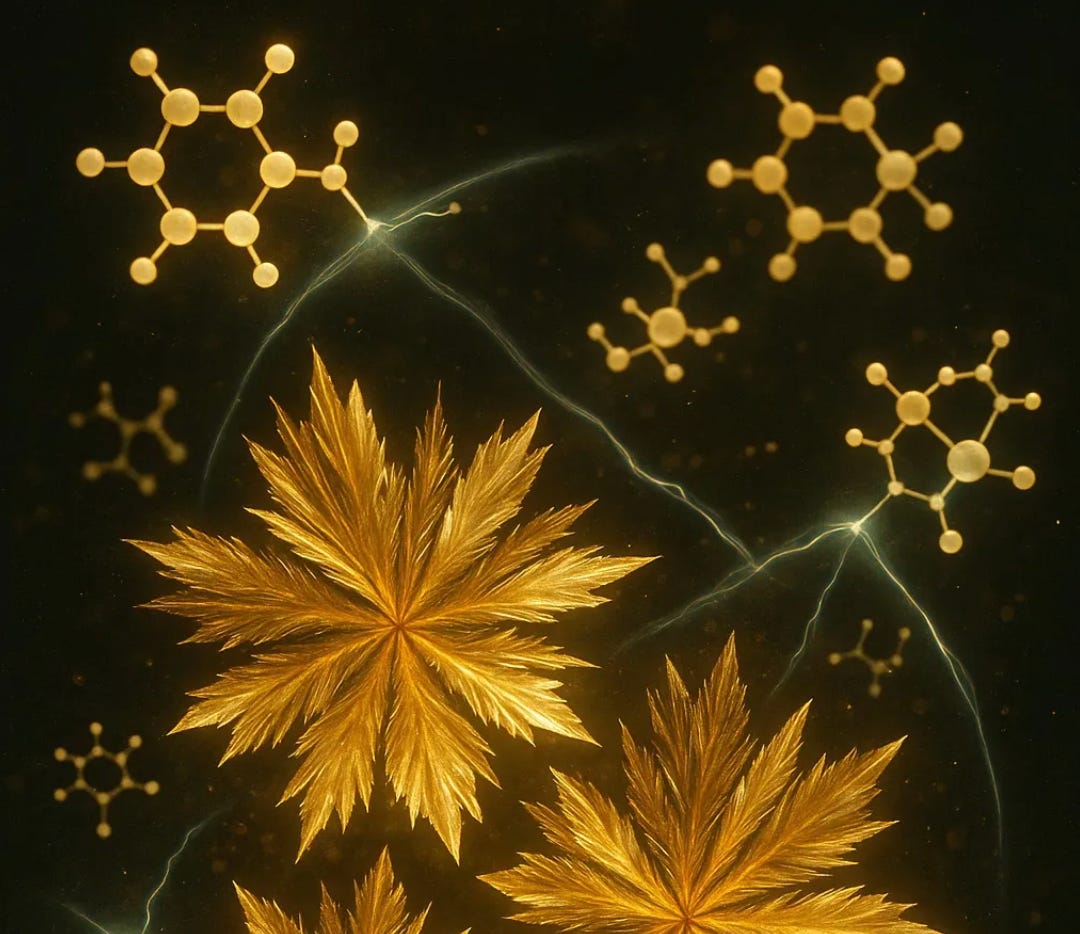
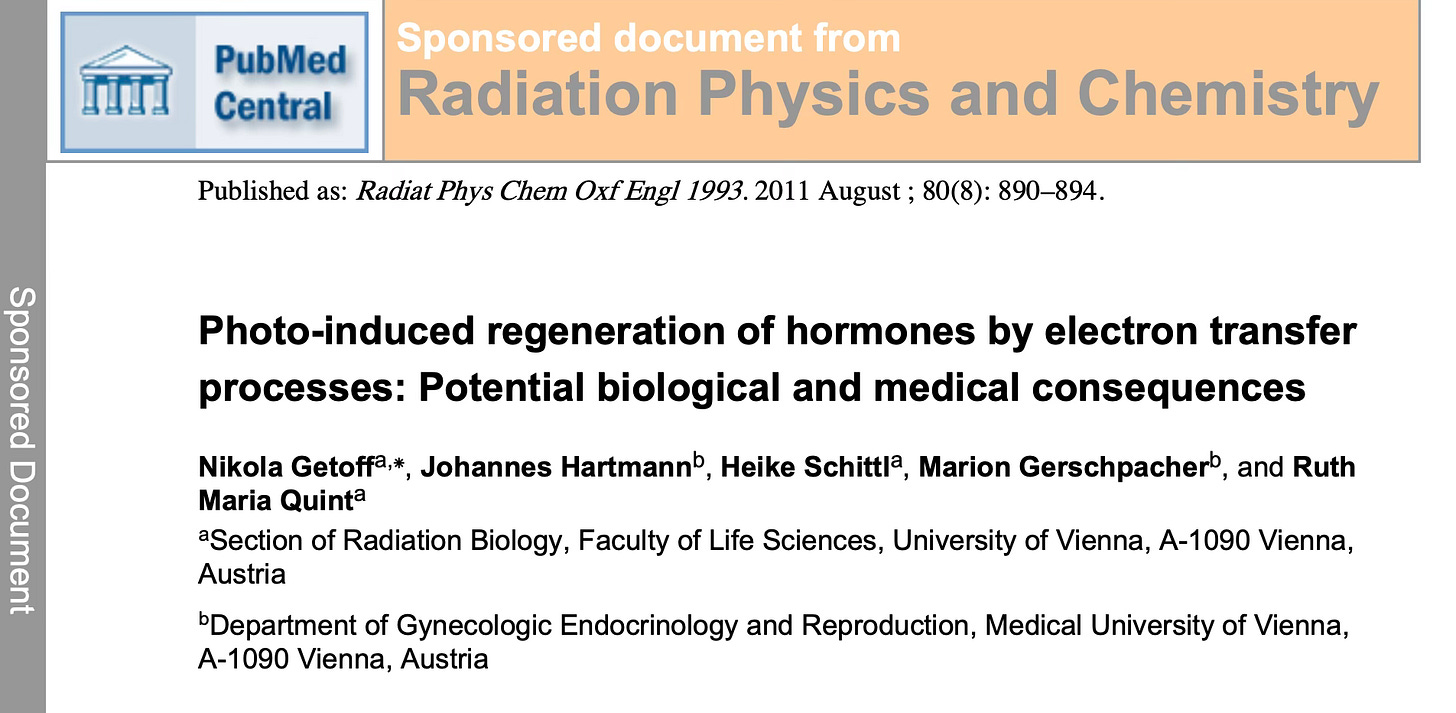

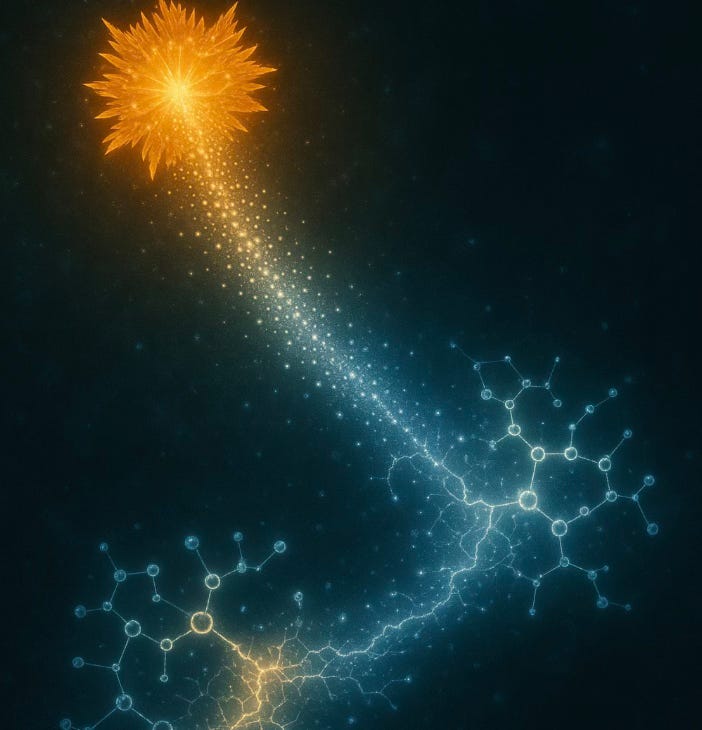
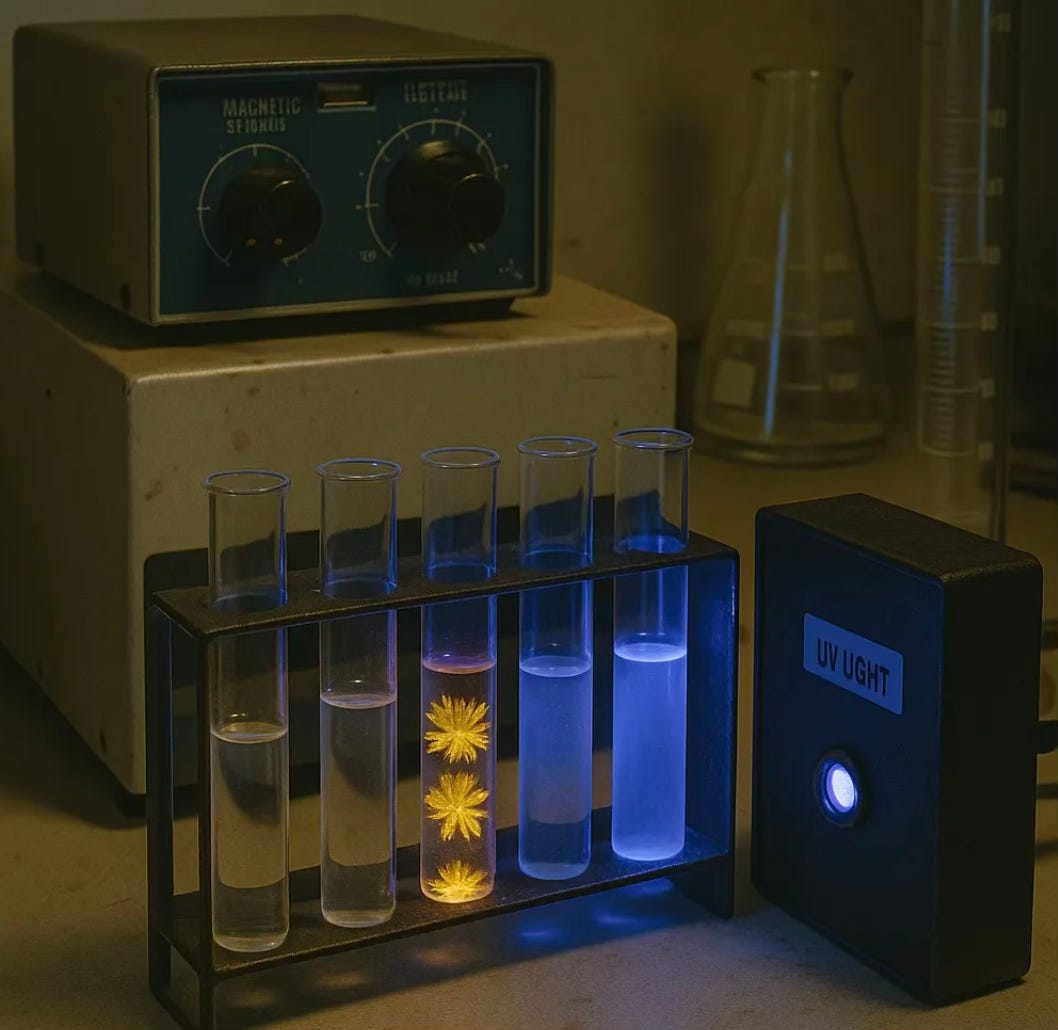
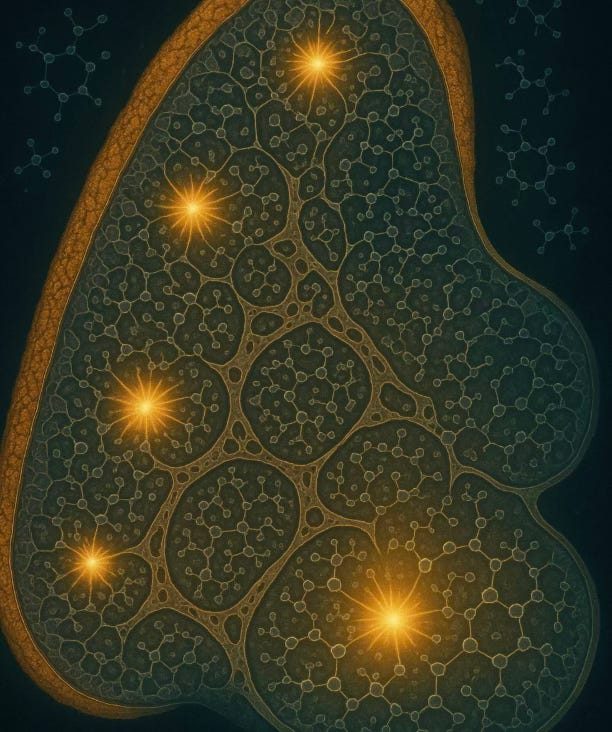
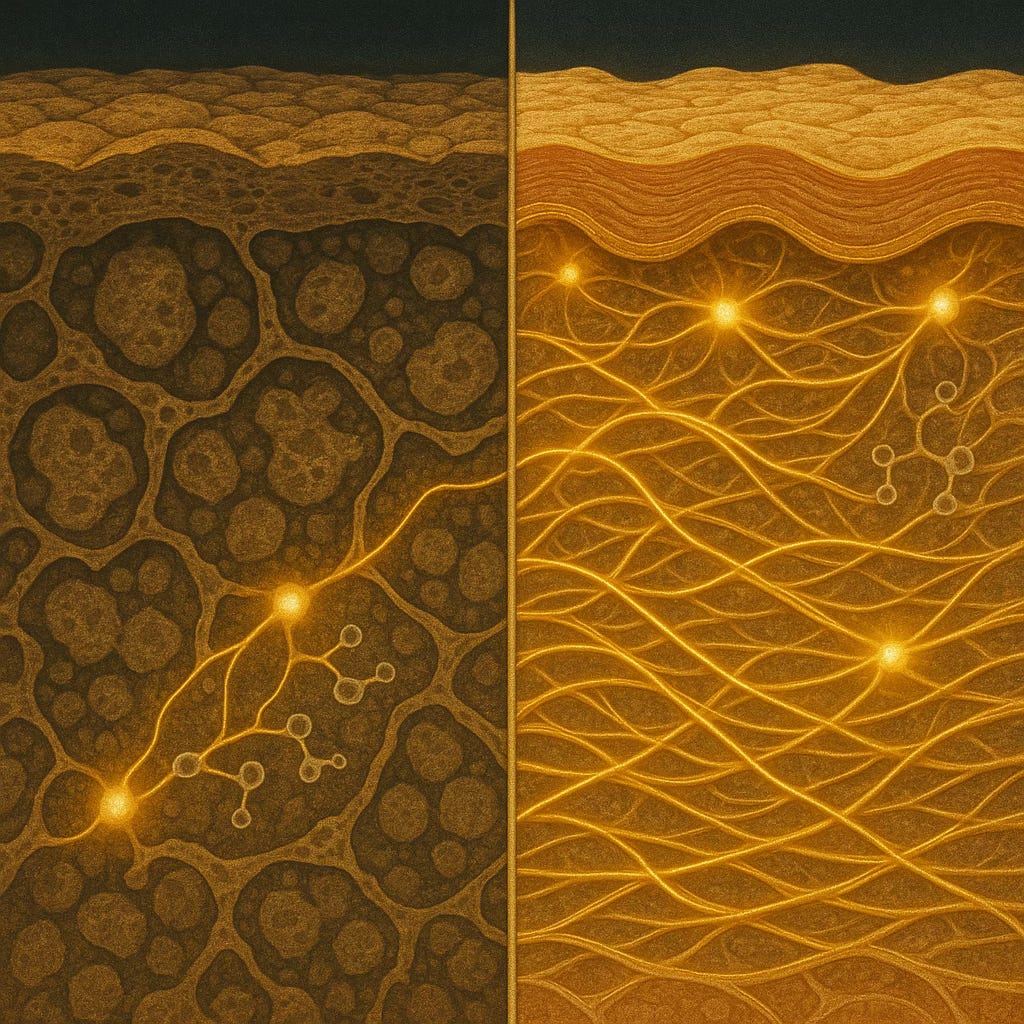
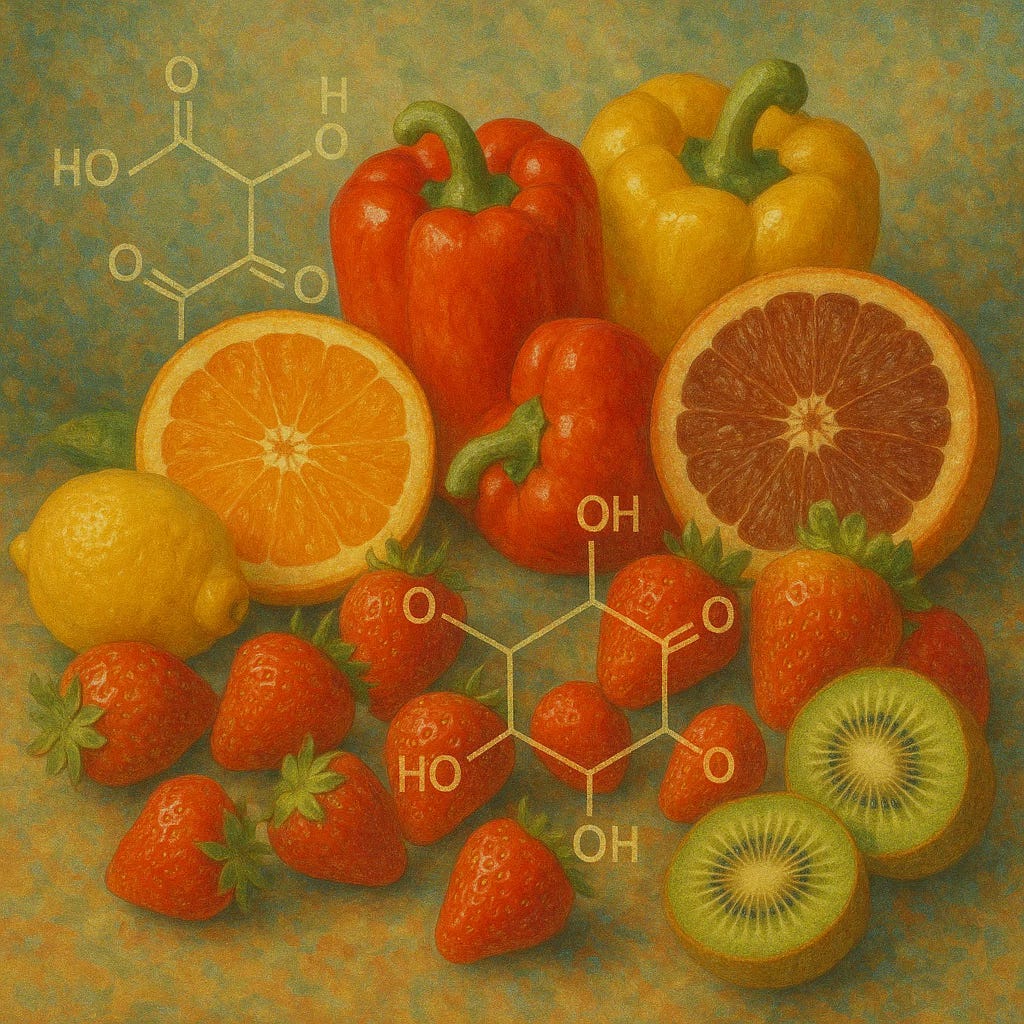
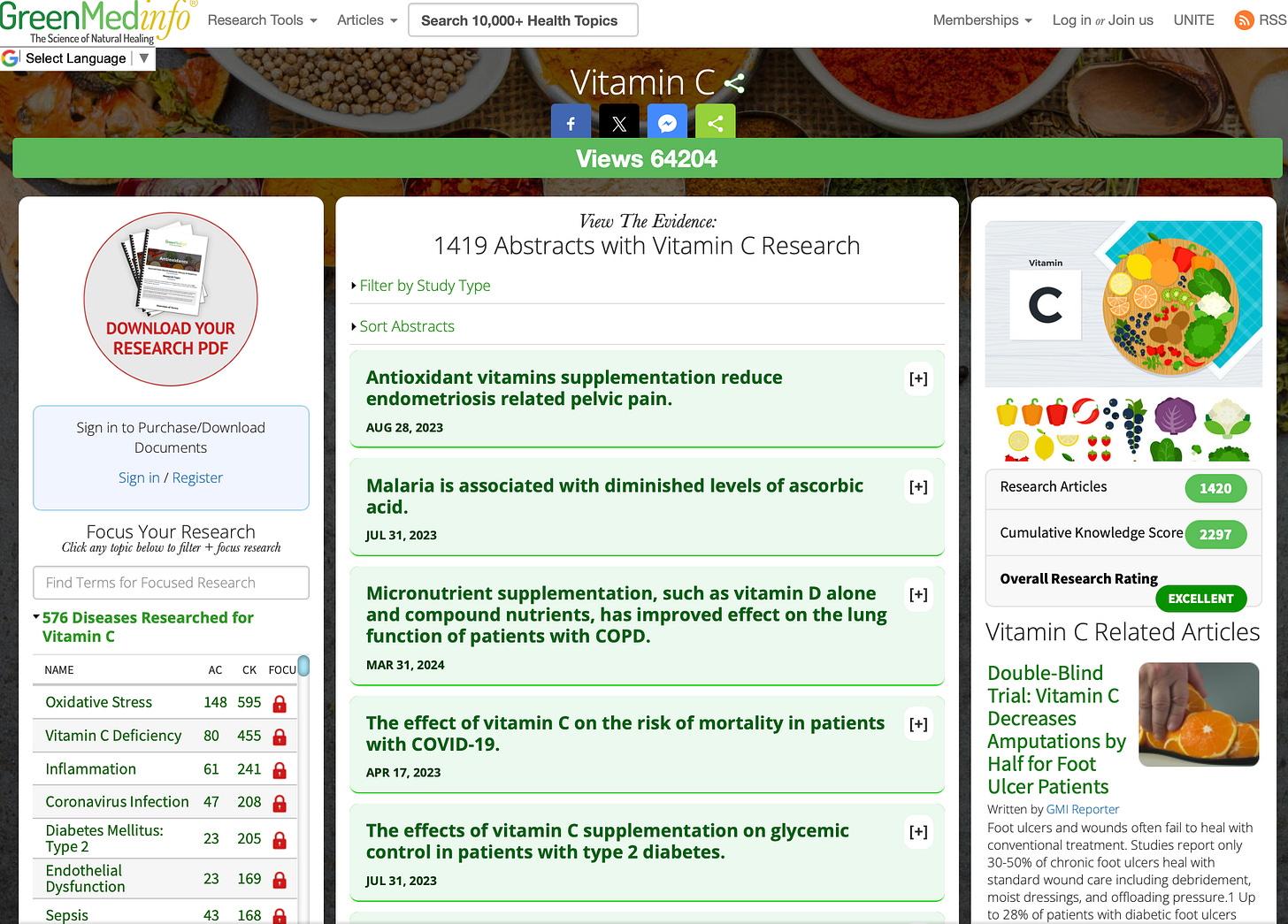
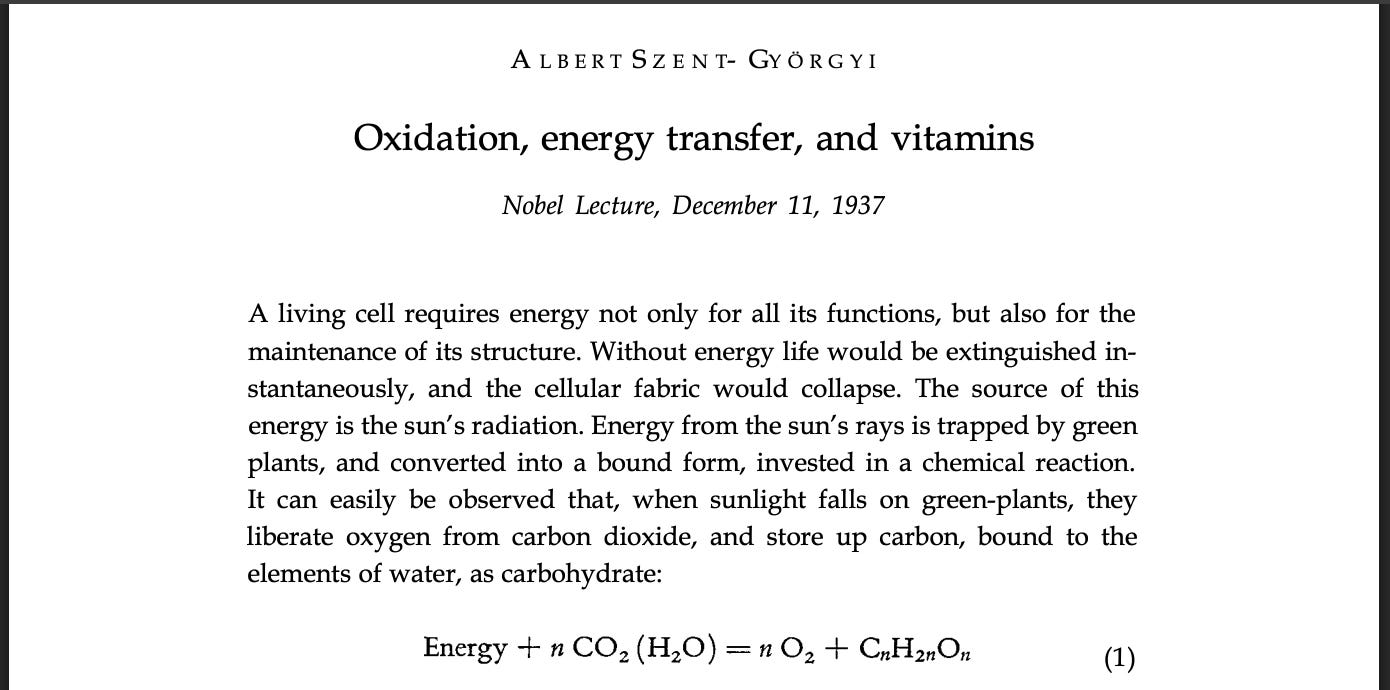
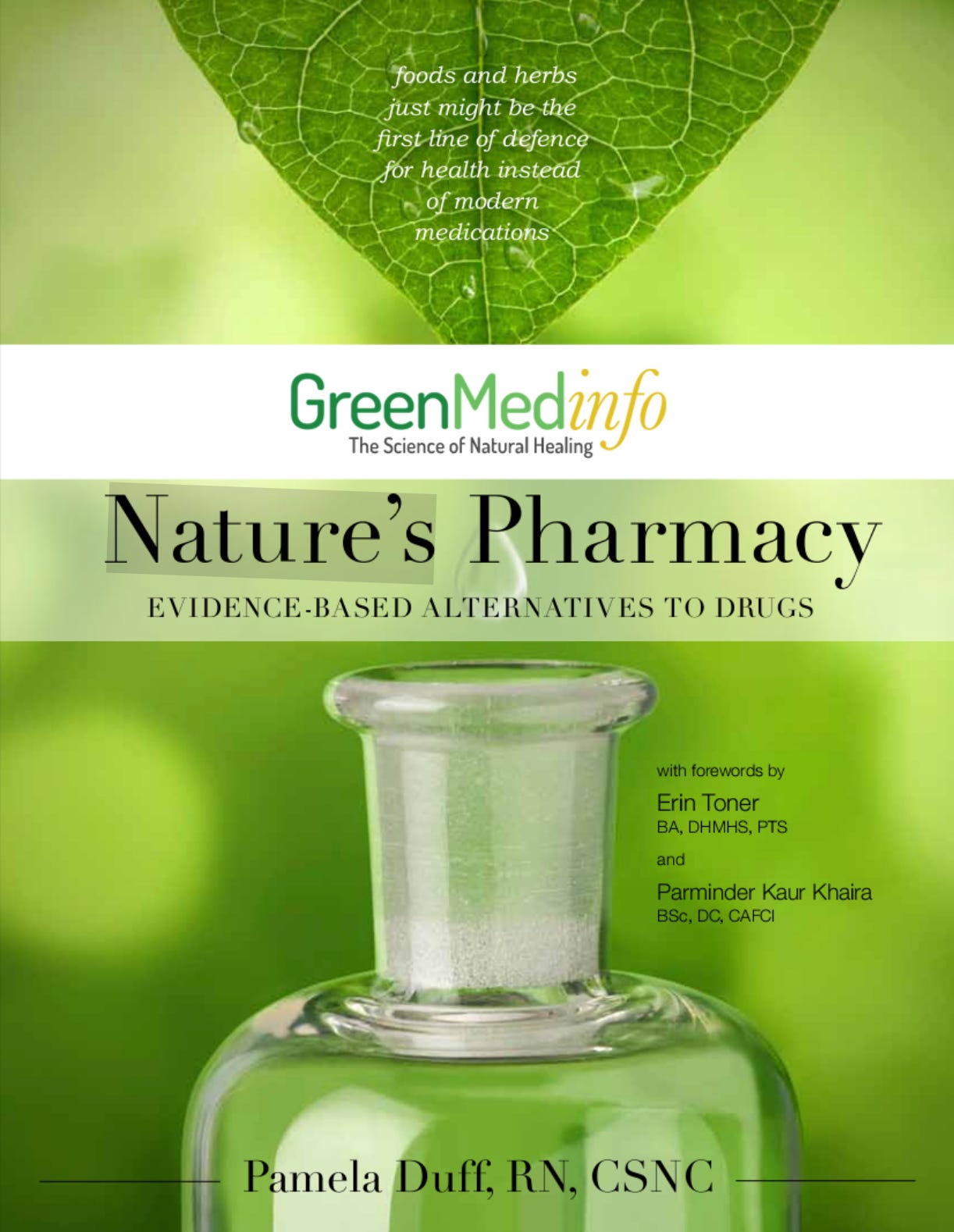

No hay comentarios:
Publicar un comentario